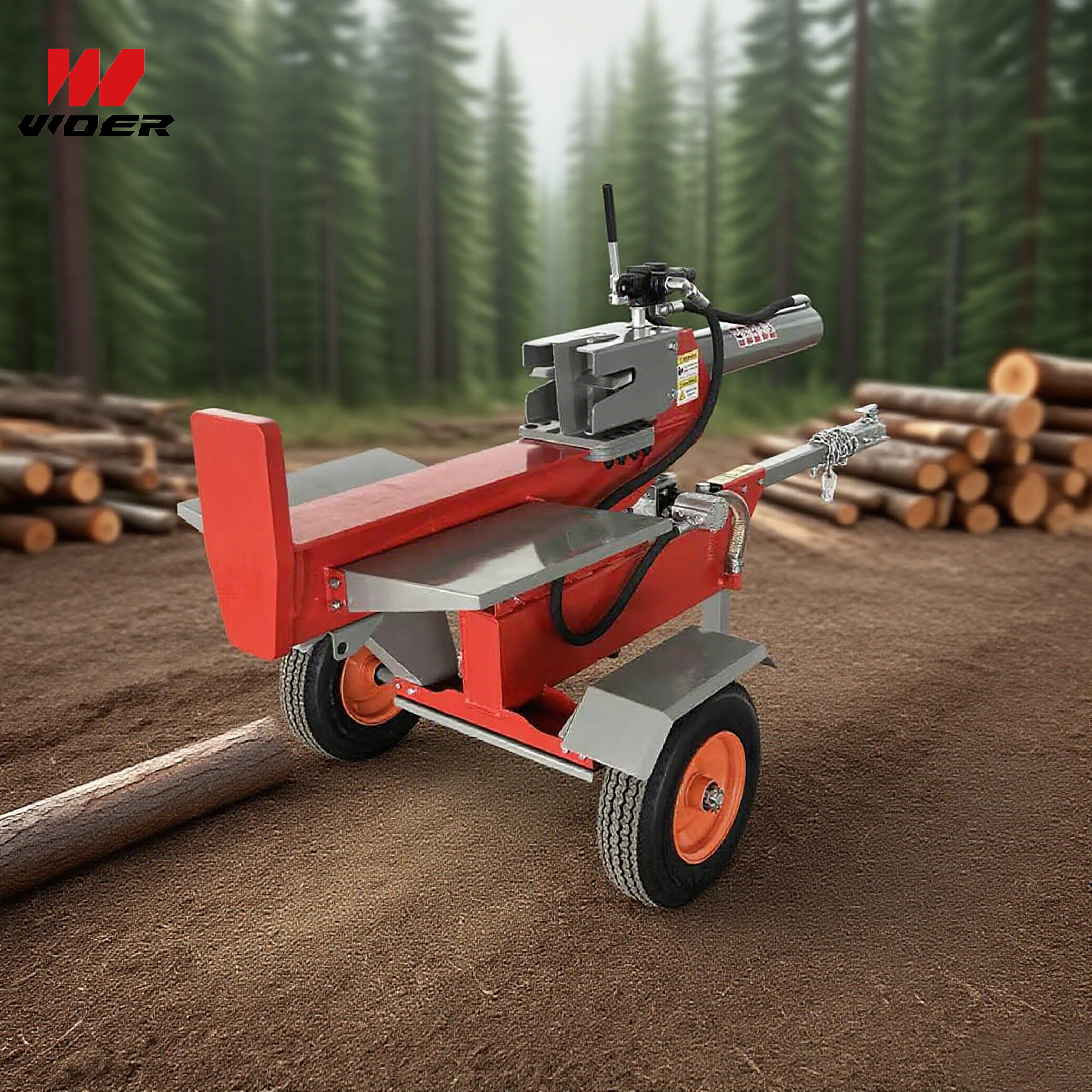Navigation
Contact us
Phone
Message

Why a focused safety checklist matters for log splitter operators
Operators, technical evaluators and procurement teams face overlapping priorities: reduce injury risk, minimize downtime, comply with standards and control lifecycle costs. A dedicated log splitter safety checklist aligns daily operations with those goals for both electric log splitter models and hydraulic log splitter systems. It streamlines pre-shift inspections, enforces correct use, and clarifies maintenance responsibilities for contract execution and financial approvers.
Key hazards and risk controls
Log splitting exposes personnel to pinch points, ejected wood fragments, over‑torque failures and electrical or fuel hazards depending on the model. Core controls include correct PPE, mechanical guards, two‑hand controls or foot-operated safety interlocks, secure work surfaces and lockout/tagout for maintenance. For electric units, confirm proper grounding and RCD protection; for log splitter gasoline engines, manage fuel storage and hot‑surface ignition risks. Kinetic log splitter variants require inspection of flywheel guards and energy storage components.
Standards and compliance
Adopt relevant industry guidance and safety frameworks (e.g., consensus standards from ASTM, EN, ISO and local regulations) to validate machine guards, emergency stops and electrical protection. Incorporate manufacturer-recommended inspection intervals and keep records to support EEAT and procurement audits.
Pre-shift operator checklist (use before each shift)
- Visual inspection: Check the frame, beam, wedge and cradle for cracks, excessive wear or leaks—pay attention to hydraulic lines and fittings on a hydraulic log splitter.
- PPE confirmation: Safety glasses, face shield, cut-resistant gloves, steel-toe boots and hearing protection must be worn and available.
- Controls test: Verify emergency stop, two-hand safety switches, and throttle/pressure controls operate smoothly and return to neutral.
- Electrical safety (electric log splitter): Ensure the supply cable, plug and connector are undamaged; confirm RCD/GFCI is functional and the unit is appropriately rated for site voltage.
- Fuel/fluids check (log splitter gasoline & hydraulic): Confirm fuel level, oil levels and hydraulic fluid condition; note contamination or foaming.
- Stability & anchoring: Confirm the splitter sits on a level, stable surface and any anchoring hardware is secure, particularly for vertical log splitter setups.
- Work area: Clear debris, maintain a minimum safe zone radius free of bystanders, and ensure adequate lighting.
Operational best practices
Follow manufacturer torque/pressure limits and control feed rates to avoid kickback or stuck logs. Use positioning tools or mechanical clamps for irregular logs to reduce hand exposure to moving parts. Alternate operator posture and assign spotters for heavy or awkward loads to limit manual handling risks.
Use-case guidance by machine type
Maintenance and periodic inspections
Documented preventive maintenance prevents failures that can cause injuries or contract delays. Weekly checks should log hydraulic pressure, filter condition and wedge alignment. Monthly inspections should include full fluid analysis, fastener torque verification and gearbox lubrication checks. Annual safety audits validate guard integrity, control responsiveness and compliance with safety standards.
Quick maintenance checklist
- Replace damaged hoses and seals immediately; never operate with visible leaks.
- Sharpen or replace wedges to reduce force spikes and reduce wood fragmentation.
- Test emergency stop function under load monthly and log results.
- Verify battery or starter system on gasoline units; charge or replace as required.
Training, permits and lockout/tagout
Operators and supervisors must complete role‑specific training, including hands‑on familiarization with the machine's controls and emergency procedures. Maintain training records for audits. Implement lockout/tagout procedures for maintenance: isolate electrical supply, relieve hydraulic pressure and remove keys to prevent unauthorized start-up.
Emergency response and incident management
Prepare clear emergency protocols: immediate shutdown, secure the machine, render first aid, and report the incident per company policy. Keep a first aid kit and a Class B fire extinguisher accessible for gasoline‑powered units. Review incidents in toolbox talks to capture lessons learned and adjust the checklist.
Procurement and lifecycle considerations for decision-makers
When evaluating options—electric log splitter vs hydraulic log splitter, kinetic log splitter or gasoline units—consider total cost of ownership: energy source, expected throughput, maintenance skill requirements and safety features. For budget-sensitive purchases like log splitter for sale cheap offers, validate that safety features and service support are not compromised. Include spare parts, service lead times and warranty terms in commercial evaluations.
Common operator errors and how to avoid them
Avoid the temptation to remove guards for speed, place hands near the wedge, or work fatigued. Use mechanical log cradles or feed chutes for small, consistent batches to reduce hand contact. Supervisors should enforce rotation and breaks during high-volume shifts to maintain attention and control precision.
Integration with site safety programs and audits
Embed this checklist in pre-shift paperwork, incorporate it into digital permit-to-work systems and tie completion to KPI dashboards for continuous improvement. Use audit trails to demonstrate compliance to financial approvers and contract owners, reinforcing trust in procurement decisions.
Why choose us and next steps
We combine decades of field experience with evidence-based safety protocols to help clients reduce incidents and optimize throughput. For model-specific guidance, parts support and operator training packages, contact our safety team. If evaluating units, we can provide comparative risk assessments for electric, hydraulic and kinetic log splitter options and offer on-site demonstrations.
Closing reminder
Consistent pre-use checks, formal training, documented maintenance and the right selection between electric log splitter, hydraulic log splitter, kinetic log splitter or log splitter gasoline models form the backbone of safe, productive operations. Implement this checklist, review it quarterly and adapt controls as your workload evolves to protect people and assets.

This stunning beach house property is a true oasis, nestled in a serene coastal community with direct access to the beach.
Contact
West Street, Melbourne Victoria 3000 Australia